Nose Surgery
by Type
7 Different Nose Types
- Short nose
- Low nose
- Deviated nose
- Droopy (long) nose
- Hump nose
- Bulbous nose
- Contracted (Upturned) nose
Doctor’s Message
It is important to understand that the nose surgery cannot simply consider the nose only, but it rather needs to find the harmonious ratio within the individual’s face. The nose, the center of the face, is wholly connected from the forehead, philtrum, lips, and front chin. Therefore, it is significant to analyze distinct characteristics and bring out one’s beauty rather than creating an identical and conventional nose shape. At VIP clinic, we aim to provide the safest and use best surgery materials and methods for surgeries.
The ideal method for an individual depends on a nose condition such as length, infection, skin, tissue, and the number of surgery cases. Our premium rhinoplasty thoroughly analyzes and considers detailed factors creating a voluminous, exclusive, and sophisticated image. Here are seven most common nose types I have categorized for the rhinoplasty.
Operation Information
- Surgery Time : Varies
- Anesthesia Type : General Anesthesia
- Hospitalization : 0-1 Day
- Stitch Removal : 5 Days
- Recovery Time : 10 Days
4 Conditions for Harmonious Nose and Face
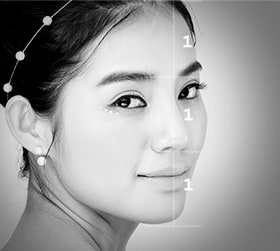
CONDITION 01 The individual ratio between the forehead-eyebrows, eyebrows-nose, and nose-chin is ideal at 1:1:1.
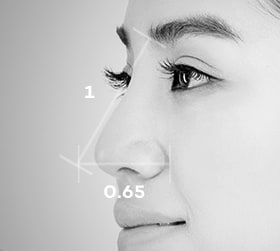
CONDITION 02 Assuming the nose length is 100, the nose height is ideal when it is ~65% of the nose length.
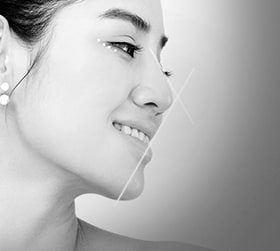
CONDITION 03 The nose tip is slightly above the nose bridge and the size should be harmonized with the chin size.
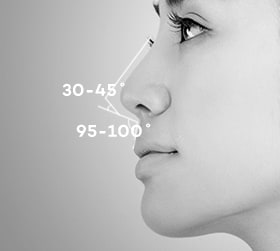
CONDITION 04 The angle between the columella and philtrum is 95-100 degrees and the angle between the columella and nose tip is 30-45 degrees for a harmonized nose.
Nose Surgery Methods for 7 Different Nose Types
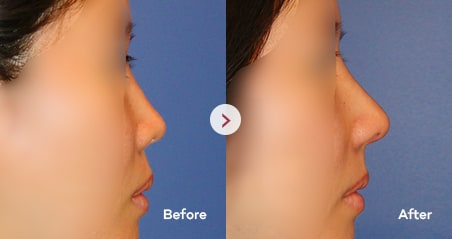
About ‘Low Nose’ The low nose tends to generate a flatter and bigger face image due to loss of a face volume. Therefore, the main goal is to add heights and project out the nose structure. However, one of the major reasons of revision rhinoplasty is that people insert a foreign implant all the way from the beginning to the end of the nose; eventually, the foreign implant slowly develops side effects such as skin reddening or contraction (piggy nose/pinched nose.) Ultimately, using autologous tissues to elongate nose length and projecting the structure is the safest method rather than solely using the foreign implant. VIP Plastic Surgery discovers the balanced ratio and considers one’s nose condition to create a harmonized line from forehead, glabella, nose bridge, nose tip, philtrum, and lips. Low Nose Distinct Characteristics
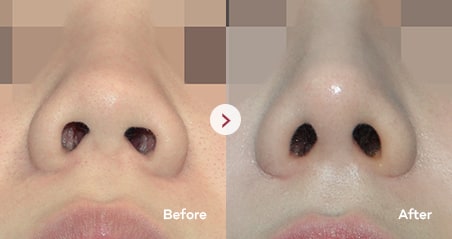
About ‘Deviated Nose’ The deviation in nose usually appears innately or due to physical accidents during the adolescent period. This deviation causes a deformation in the nasal bone, lower cartilage, and septal cartilage which all of these need to be precisely analyzed to decide which combination of surgery methods will be performed. The challenging part of the deviated nose is that not only the nose shape deviates aesthetically but also the deviation causes functional problems causing discomforts. Dr. Lee Myung Ju has presented ‘Septoturbinoplasty’ academic paper for the first time in Korea (2007). VIP’s Septal Deviation Rhinoplasty creates the highest quality of aesthetic and functional result from a single surgery maximizing the usage of septal cartilage whereas the traditional methods needed two separate surgeries to achieve these two goals. Deviated Nose Distinct Characteristics
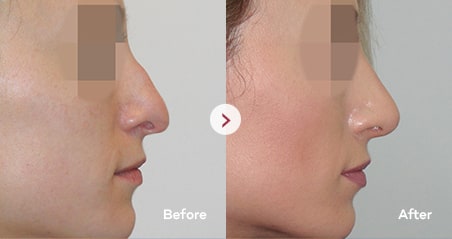
About ‘Droopy (Long) Nose’
Droopy and long nose is commonly known as a
ptotic nasal tip which is a type of nose shape that many people
consider to undergo the rhinoplasty. The droopy, long, or hook nose
main concern is a lengthy nasal tip; this is due to weak cartilage
structures on the nose tip. The rhinoplasty allows patients to
achieve a softer and more defined image by refining the length and
shape. It is also important to recognize how much the nostrils
should be showing. Most people who have long and droopy nose do not
show nostrils from the front view which should be adjusted for the
balanced ratio. During the rhinoplasty, it is important to adjust
and re-shape the extrinsic and intrinsic side of lower lateral
cartilages to prevent a recurrence of a drooping situation; the
angle between the columella and philtrum needs to be balanced as
well. If necessary, the muscle inside the columella needs to be
incised depending on the patient condition.
At VIP, the droopy (long) nose rhinoplasty focuses on
reconstructing the lower lateral cartilage and columella structure
that are main causes of the droopy appearance. The nose bridge and
basement must be strongly supported to fundamentally create a
balanced nose length. Droopy (Long) Nose Distinct
Characteristics
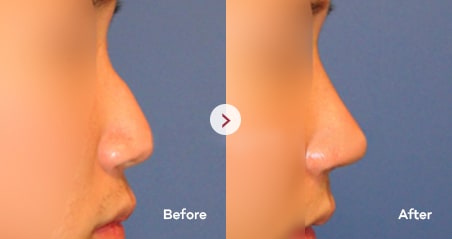
About ‘Hump Nose’ Hump nose is a type of nose that has a protruded nose bridge, wide nasal bone, and droopy nose tip. One of the main characteristics of a humped nose is that the septal cartilage underneath the nose is weak and uneven that creates a hump shape. The surgery method depends on how severly the nose is deviated and humped. If severe, functional problem like rhinitis occur from the deformation of nasal bone, septal cartilage, structural cartilage, and muscles. Therefore, this would not be a simple surgery which is simply carving the hump and adding the foreign implants. It is important to precisely diagnose the fundamental causes of a humped nose before choosing the surgery method. Depending on the situation, osteotomy, structural cartilage plasty, and septal cartilage correction may be necessary to remove the hump and create a smooth nose shape. Hump Nose Distinct Characteristics
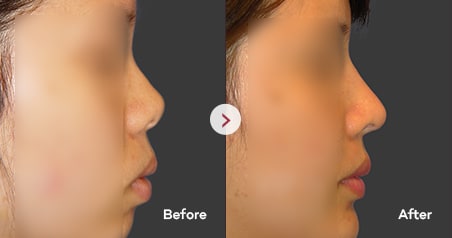
About ‘Short Nose’ The characteristics of the short nose are that the nose is short in length and tend to show the nostrils; therefore, people commonly describe as a piggy nose. The short nose rhinoplasty is one of the most challenging surgeries than any other surgeries as it addresses not only the nose length but also the nose height. Especially, using a foreign implant is not recommended for a short nose type because there is a high possibility that there will be side effects such as skin reddening, contraction, and skin thinning. Therefore, the best material would be autologous cartilages such as septal cartilage and rib cartilage. However, harvesting a septal cartilage requires a high expertise as harvesting the good amount yet necessary amount to prevent a collapse is challenging in a short and small nose. The short nose is one of the common characteristics for Asians and African American. Short Nose Distinct Characteristics
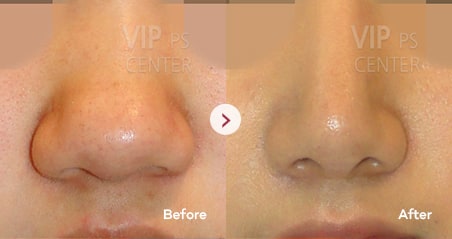
About ‘Bulbous Nose’ Bulbous nose is one of the common characteristics of an Asian nose that many patients consider when considering the rhinoplasty. Bulbous nose usuaully appears due to few main reasons. When the patient has a large nasal tip fibrofatty tissues, these partial soft tissues should be eliminated to create a slimmer tip but not too much as it could give an unnatural result. Another main reason of a bulbous nose is due to the thick nasal skin itself. Patients with thicker skin tend to have round nose tips than the patients with thinner skin. When necessary, the alar reduction may be applied for patients who desire to achieve slimmer nostrils. Most patients do not recognize the precautions of an alar reduction, but the important part is that once the alar reduction is performed, it cannot be taken back anymore. Therefore, it is important to carefully decide whether or not to perform the alar reduction. Bulbous Nose Distinct Characteristics
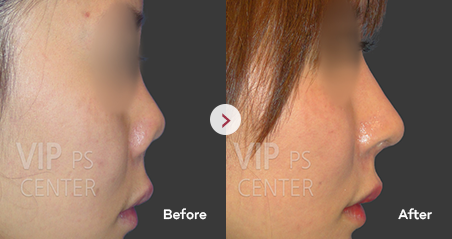
About ‘Contracted (Upturned) Nose’ When the contraction occurs due to the side effects of the implant, the nose becomes severely turned up and the nostrils are more visible. There are many reasons that possibly cause the side effects in the nose. Most of the cases are due to adverse reactions of foreign implants from the body. When the body cannot take the foreign implants well, the inner nasal tissues start to become tight and contract eventually causing a shortening of the length. For the revision surgery, it is important to remove all the foreign implants in the nose to fundamentally prevent further side effects and strogly build a supporting structure in the basement of the nose. In serious cases, it is necessary to ensure the length and the structure first; then adding the height can be considered accordingly using an autologous tissue. Common Reasons for Revision Rhinoplasty
Post-operative Care
Related Surgeries
Why Choose VIP?
Meet the Chief Surgeon: Dr. Myung Ju Lee
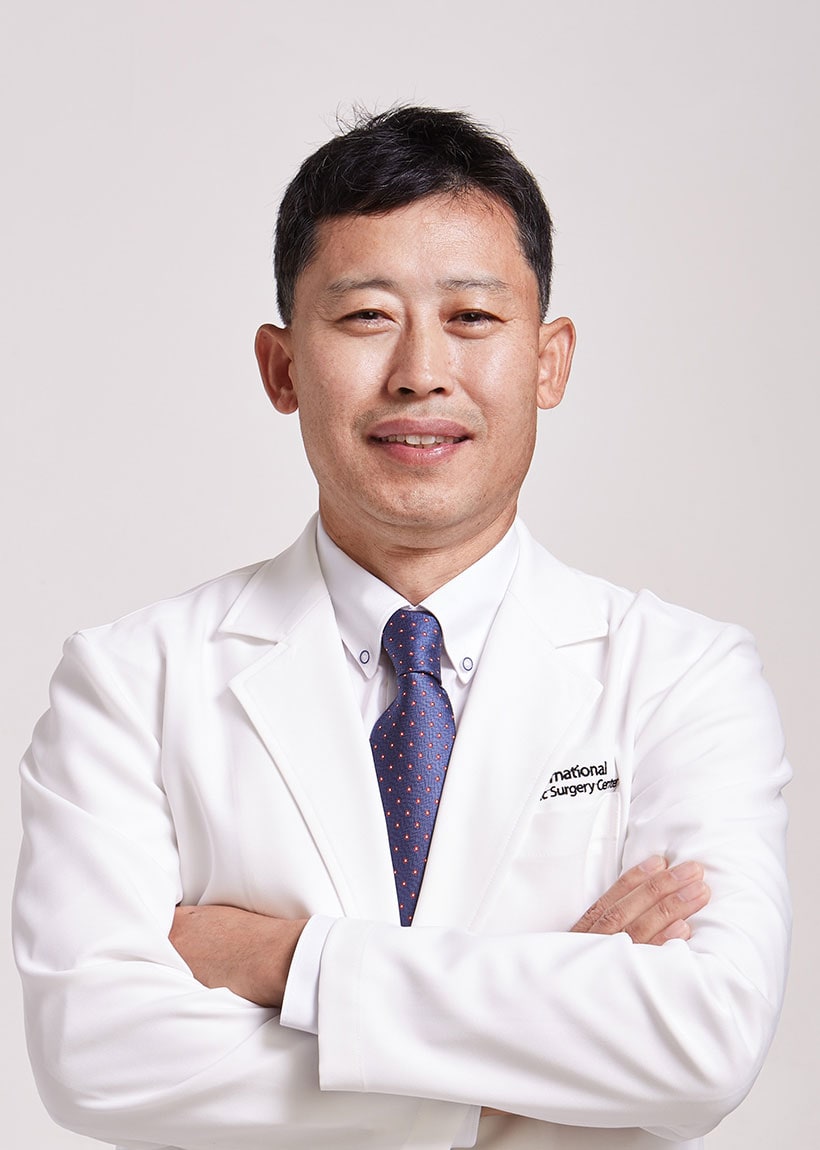
Dr.Lee Myung Ju is the chief surgeon at VIP International Plastic Surgery Center. He has been dedicating himself in the field of plastic surgery as a professor, researcher, and surgeon for more than 24 years now. As a faculty member of the International Society of Aesthetic Plastic Surgery and the American Society for Aesthetic Plastic Surgery, he has continuously devoted himself to share his techniques and knowledge. Dr.Lee is an eminent surgeon who is recognized for his gifted surgery techniques especially for the rhinoplasty and anti-aging surgeries. For decades, many international patients from Asia, the United States, and Europe have visited our clinic to receive surgeries; VIP clinic and his reputation is ever becoming strong and solid. Click *here to read more about his academic and surgery activities.

FAQ
Contact Us
If you would like to receive VIP doctor’s comments regarding your interested treatment or surgeries, feel free to contact us via mobile messenger app. Please let us know your interested areas with clear photos (front and side) for a free online consultation. Your photos will be privately used for consultation purposes only.
Available via WhatsApp

